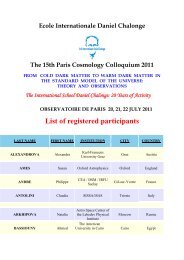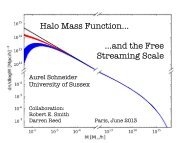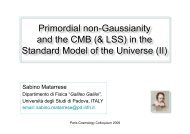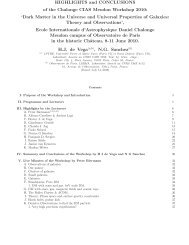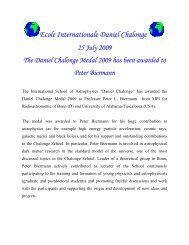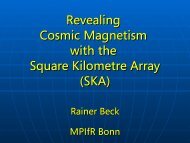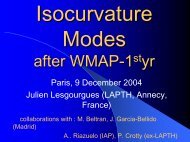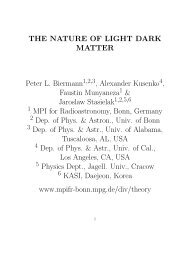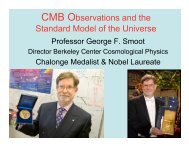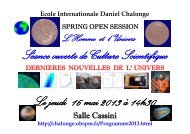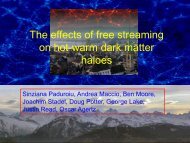You also want an ePaper? Increase the reach of your titles
YUMPU automatically turns print PDFs into web optimized ePapers that Google loves.
Stellar agglomeration conditions<br />
• Massive stars form in groups<br />
• Mass available at most about 107 M⊙ from baryonic<br />
mass fraction, using total mass of 5 · 107 M⊙ in primordial<br />
galaxy (Gilmore et al. 2007)<br />
• Life time of massive stars about 2 · 106 years, independent<br />
of mass<br />
• Free-fall time in DM clump about 107.1 yrs, so from<br />
redshift ∼ 100 matter falls into these clumps<br />
19<br />
• Also, relaxation time scale must be about 3 crossing<br />
times or less, implying (Lightman & Shapiro 1978)<br />
about 300 or fewer stars<br />
• Instability sets in at 5 · 105 M⊙, and infall will enhance<br />
the mass of the final black hole<br />
• Therefore initial massive stars of order > ∼ 10 3 M⊙



